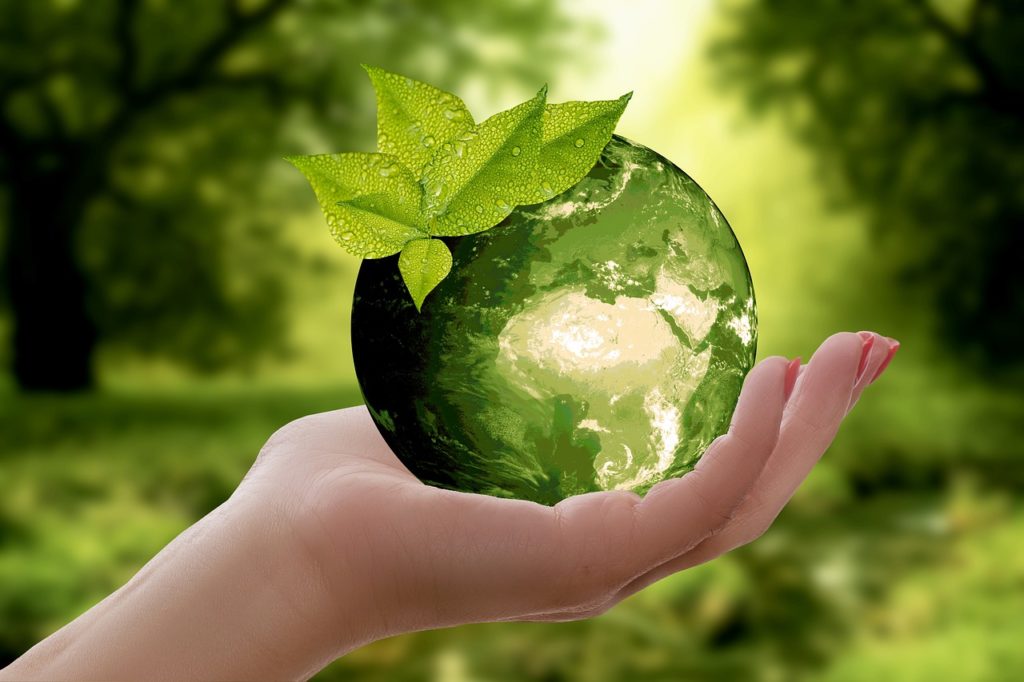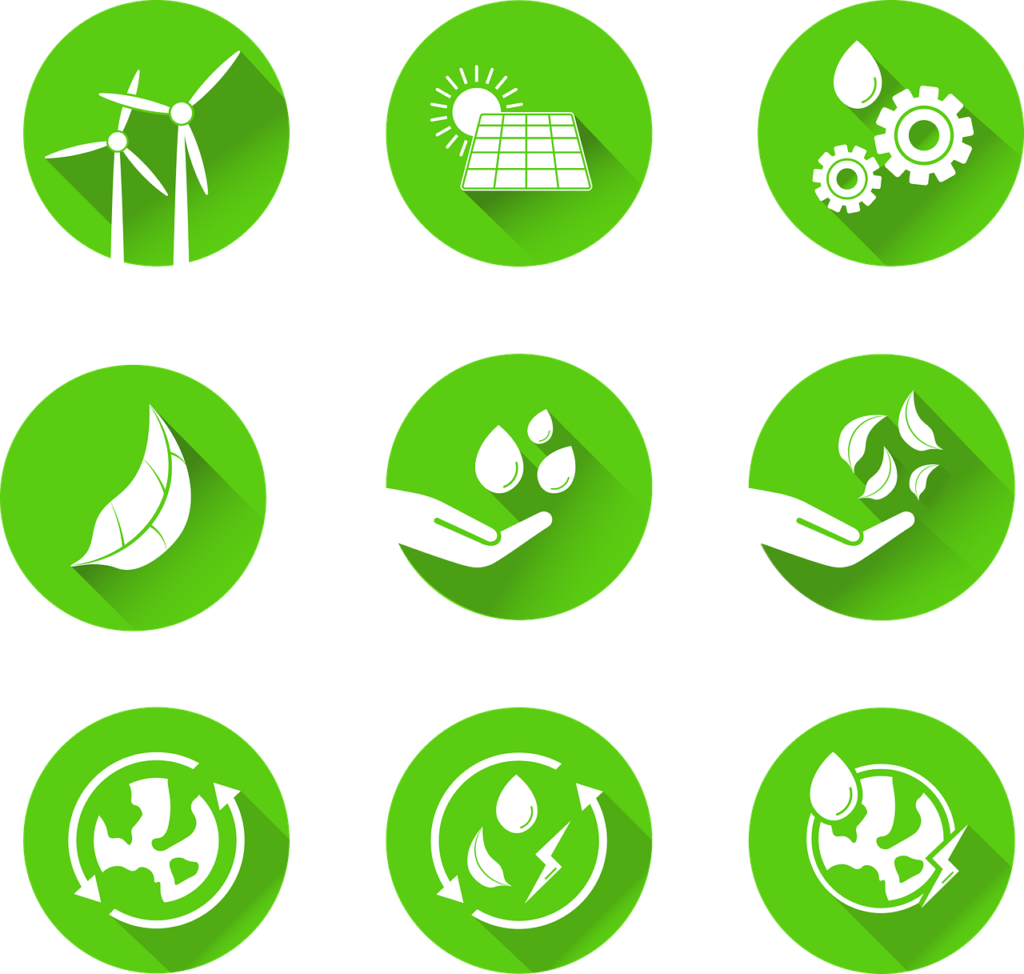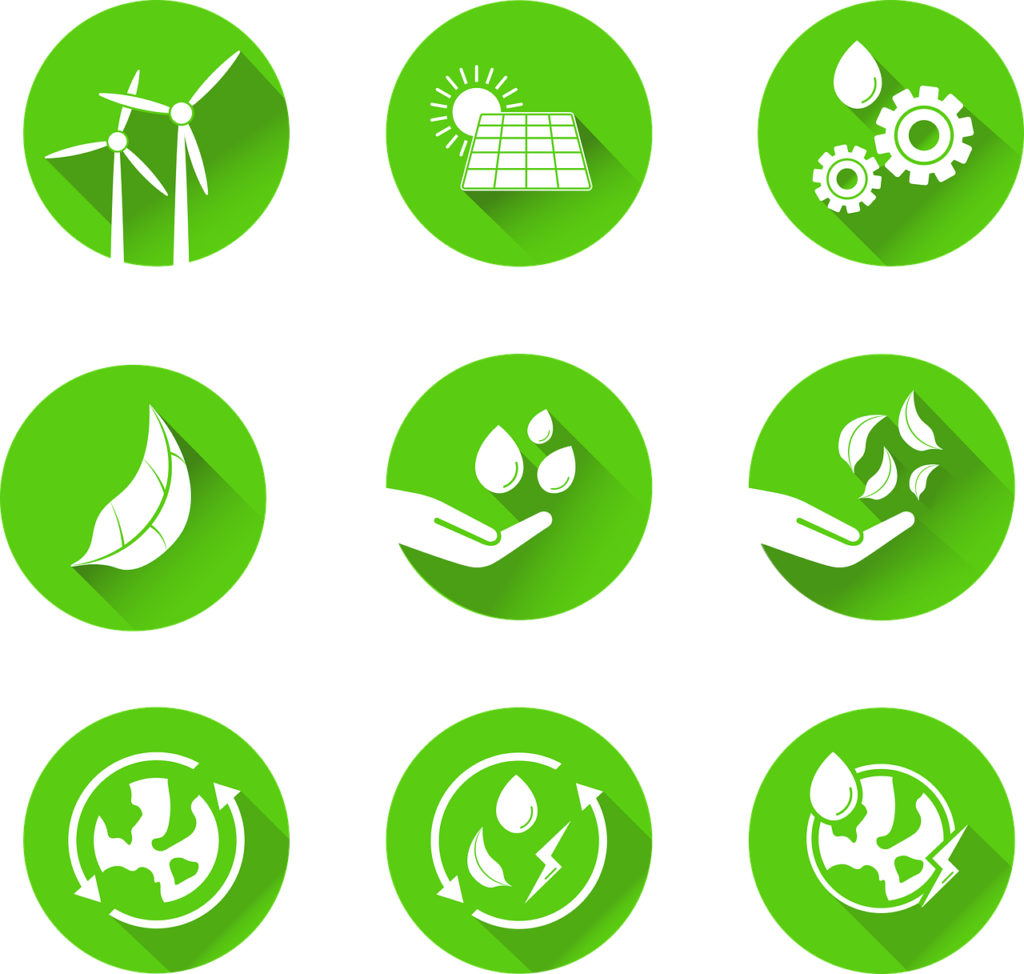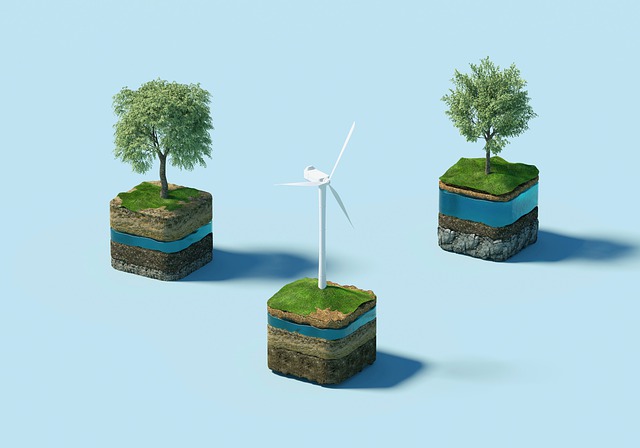Imagine living in a city where the water you use in your daily activities goes beyond simply being “waste.” From flushing the toilet to doing laundry, every drop of water becomes a valuable resource that is efficiently and innovatively treated. This is the vision behind innovative wastewater treatment solutions for circular cities. In this article, we will explore the exciting advancements in wastewater treatment technology that are transforming the way cities manage and reuse water, paving the way for a more sustainable and resourceful future.

1. Smart Wastewater Management
In today’s rapidly evolving world, the concept of circular cities is gaining momentum. These cities aim to create a sustainable and regenerative urban environment by minimizing waste generation and maximizing resource recovery. One crucial aspect of achieving this goal is innovative wastewater treatment solutions. Smart wastewater management plays a pivotal role in ensuring that wastewater is treated effectively and efficiently, allowing for the recovery of valuable resources.
1.1 Automated Monitoring Systems
Automated monitoring systems are revolutionizing wastewater management. Traditionally, manual inspections and sampling were labor-intensive and prone to errors. With automated monitoring systems, sensors and real-time data collection technologies are deployed throughout the wastewater treatment process. These sensors continuously monitor various parameters such as pH levels, temperature, dissolved oxygen, and chemical composition. By having instant access to accurate data, operators can make informed decisions and address potential issues promptly, resulting in more efficient and effective treatment.
1.2 Real-time Data Analysis
The abundance of data collected by automated monitoring systems is invaluable in optimizing wastewater treatment processes. Real-time data analysis allows for the identification of trends, anomalies, and potential areas for improvement. Through machine learning algorithms and data analytics, operators can predict the performance of treatment facilities, minimize energy consumption, and optimize resource allocation. This data-driven approach ultimately leads to the development of more sustainable and efficient wastewater treatment methods.
1.3 Efficient Resource Allocation
Efficient resource allocation is essential for circular cities aiming to maximize resource recovery from wastewater treatment. Smart wastewater management systems enable real-time monitoring and control of resource usage. By analyzing data on energy consumption, chemical dosing, and water usage, operators can identify opportunities for optimization. For example, by adjusting energy usage based on demand patterns, implementing smart dosing strategies for chemicals, and recycling water within the treatment plant, considerable cost and resource savings can be achieved. This efficient resource allocation is vital in creating a sustainable and regenerative urban environment.
2. Decentralized Wastewater Treatment Systems
Decentralized wastewater treatment systems offer an alternative to traditional, centralized methods. These systems bring treatment closer to the source of wastewater generation, reducing the need for extensive infrastructure and long-distance transportation. This decentralization approach holds several benefits for circular cities.
2.1 On-site Treatment Technologies
On-site treatment technologies, such as septic tanks and aerobic treatment units, are commonly used in residential and small-scale applications. These systems treat wastewater at or near the source, eliminating the need for extensive sewer networks and central treatment plants. On-site treatment technologies play a crucial role in circular cities, as they offer a cost-effective and sustainable solution for areas with limited access to centralized systems.
2.2 Greywater Recycling Systems
Greywater, generated from activities such as bathing and laundry, can be effectively treated and reused through recycling systems. These systems collect, filter, and treat greywater for non-potable uses such as irrigation, toilet flushing, and industrial processes. By implementing greywater recycling systems in residential, commercial, and industrial buildings, circular cities can reduce their demand for freshwater sources while maximizing resource efficiency.
2.3 Blackwater Treatment Innovations
Blackwater, which contains fecal matter and other organic waste, requires specialized treatment methods to ensure its safe disposal or reuse. Innovative treatment technologies such as anaerobic digesters can effectively convert blackwater into biogas, a renewable energy source. Additionally, the use of membrane bioreactors and advanced filtration systems enables the removal of contaminants from blackwater, making it suitable for irrigation or even human consumption after additional treatment. These innovations in blackwater treatment ensure that valuable resources are not wasted and contribute to the circularity of cities.

3. Energy Recovery from Wastewater
Another crucial aspect of innovative wastewater treatment solutions for circular cities is the recovery of energy from wastewater. By harnessing the energy potential in wastewater, cities can reduce their reliance on non-renewable energy sources and move towards a more sustainable energy mix.
3.1 Anaerobic Digestion
Anaerobic digestion is a proven technology that converts organic matter in wastewater into biogas, a mixture of methane and carbon dioxide. This biogas can be directly used as a renewable fuel for applications such as heating, electricity generation, or even as a transportation fuel. In addition to energy recovery, anaerobic digestion also reduces the volume of sludge generated during the wastewater treatment process. By implementing anaerobic digestion systems in treatment plants, circular cities can simultaneously generate renewable energy and minimize waste generation.
3.2 Microbial Fuel Cells
Microbial fuel cells (MFCs) offer a unique approach to energy recovery from wastewater. MFCs use bacteria to break down organic matter in wastewater while producing electricity in the process. As the bacteria consume the organic matter, they release electrons, which are captured and used to generate an electric current. This sustainable electricity generation method can be particularly useful in small-scale applications or remote areas with limited access to the power grid. As circular cities strive for energy self-sufficiency, MFCs provide an innovative solution to tap into the energy potential of wastewater.
3.3 Biogas Generation
In addition to anaerobic digestion, other technologies can be employed to generate biogas from wastewater. One such technology is the Upflow Anaerobic Sludge Blanket (UASB) reactor, which efficiently removes organic matter from wastewater while producing biogas. Biogas generated in UASB reactors is typically high in methane content and can be utilized for various energy applications. By utilizing biogas generation technologies, circular cities can effectively convert organic waste in wastewater into a valuable energy resource.
4. Nutrient Recovery and Reuse
Wastewater contains valuable nutrients, such as phosphorus and nitrogen, which are essential for plant growth. By recovering and reusing these nutrients, circular cities can reduce their dependence on non-renewable resources such as phosphate rock and synthetic fertilizers.
4.1 Phosphorus Extraction
Phosphorus, a vital nutrient for agricultural production, is a finite resource facing increasing scarcity. Innovative wastewater treatment solutions include techniques for phosphorus extraction. One such technique is struvite precipitation, where magnesium and phosphate are precipitated and recovered from wastewater as a slow-release fertilizer. By implementing phosphorus extraction technologies, circular cities can reduce their reliance on phosphate rock mining and contribute to a more sustainable agricultural sector.
4.2 Nitrogen Removal Techniques
Excessive nitrogen levels in wastewater can cause water pollution and harm aquatic ecosystems. Innovative wastewater treatment methods incorporate nitrogen removal techniques such as nitrification and denitrification. Nitrification converts ammonia into nitrate, while denitrification removes nitrate, converting it into nitrogen gas. These processes enable the recovery of nitrogen from wastewater as a potential fertilizer source. By implementing nitrogen removal techniques, circular cities can minimize the environmental impact of excessive nitrogen discharge while simultaneously recovering a valuable nutrient for agricultural purposes.
4.3 Fertilizer Production
In addition to phosphorus and nitrogen recovery, wastewater treatment can also serve as a source for producing organic fertilizers. Through advanced technologies such as composting, vermicomposting, and drying techniques, organic matter in wastewater can be converted into nutrient-rich fertilizers. Circular cities can then utilize these organic fertilizers to support urban agriculture, landscaping, and greening initiatives, promoting self-sufficiency and resource conservation.

5. Water Reuse and Resource Recovery
Water scarcity and the need for efficient water resource management are pressing challenges for circular cities. Innovative wastewater treatment solutions offer opportunities to reclaim and reuse water, reducing the reliance on freshwater sources and maximizing resource efficiency.
5.1 Water Reclamation Technologies
Water reclamation technologies enable the treatment of wastewater to a high quality suitable for various non-potable applications. Through processes such as advanced filtration, disinfection, and advanced oxidation, reclaimed water can be used for irrigation, industrial processes, and even groundwater recharge. By implementing water reclamation technologies, circular cities can conserve freshwater resources and ensure a sustainable water supply.
5.2 Industrial Water Reuse Solutions
Industries consume significant amounts of water for various processes. To achieve circularity, industrial water reuse solutions are essential. Technologies such as membrane filtration, reverse osmosis, and water softening enable the treatment and reuse of wastewater within industrial facilities. By incorporating these solutions, circular cities can minimize the strain on freshwater resources, reduce wastewater discharge, and promote a closed-loop approach to water use in industrial sectors.
5.3 Resource Extraction from Wastewater
Wastewater contains trace amounts of valuable resources, including metals and rare earth elements. Through innovative technologies such as biosorption and adsorption, these resources can be extracted from wastewater and reused in various industries. Circular cities can leverage these resource extraction techniques to minimize the reliance on primary resource extraction methods and promote a circular economy.
6. Eco-friendly Treatment Processes
To achieve sustainability goals, it is essential to employ eco-friendly treatment processes that minimize environmental impact and promote the health of ecosystems. Innovative wastewater treatment solutions offer several eco-friendly approaches that contribute to the circularity of cities.
6.1 Constructed Wetlands
Constructed wetlands mimic natural wetland ecosystems to treat wastewater. These wetlands promote the growth of aquatic plants, which absorb and filter pollutants, while microorganisms in the soil break down organic matter. Constructed wetlands have been proven effective in treating domestic and industrial wastewater, offering a cost-effective and sustainable solution for circular cities. Additionally, the wetland plants can be harvested and used for purposes such as biofuel production or composting, maximizing resource recovery.
6.2 Natural Filtration Systems
Natural filtration systems, such as sand and gravel filters, rely on the natural purification properties of porous materials. Wastewater passes through these filters, where physical, biological, and chemical processes remove contaminants. Natural filtration systems are simple, cost-effective, and energy-efficient, making them an attractive option for circular cities aiming to minimize the environmental impact of wastewater treatment.
6.3 Biochar Filters
Biochar, a form of charcoal produced from biomass, has excellent filtration properties. Biochar filters can effectively remove contaminants, heavy metals, and organic compounds from wastewater while promoting the growth of beneficial microorganisms. This sustainable and cost-effective filtration method contributes to the circularity of cities, as biochar can be produced from organic waste and used for multiple treatment cycles before being utilized for other purposes, such as soil amendment in agriculture.
7. Advanced Membrane Technologies
Membrane technologies have revolutionized wastewater treatment, offering efficient and effective methods for separating contaminants from water. Advanced membrane technologies play a significant role in achieving the goals of circular cities.
7.1 Membrane Bioreactors
Membrane bioreactors combine the biological treatment process with membrane filtration, providing a compact and efficient wastewater treatment solution. The membranes, typically made of polymeric materials, effectively separate solids, microorganisms, and contaminants from the water, resulting in high-quality effluent. Membrane bioreactors are ideal for small-scale applications, decentralized systems, and areas with limited space for extensive treatment infrastructure. By implementing membrane bioreactors, circular cities can achieve effective treatment, maximize resource recovery, and minimize the footprint of the treatment facilities.
7.2 Forward Osmosis Systems
Forward osmosis is an emerging membrane technology that relies on a natural osmotic pressure gradient to separate water from contaminants. In forward osmosis systems, a concentrated draw solution effectively pulls water through a semipermeable membrane, leaving contaminants behind. This process requires less energy compared to traditional reverse osmosis systems, making it a more sustainable option for circular cities. Forward osmosis can be employed for water reclamation, concentrating wastewater streams, and even in desalination processes, contributing to the circularity of water resources.
7.3 Nanofiltration and Reverse Osmosis
Nanofiltration and reverse osmosis are widely used membrane technologies in wastewater treatment. These technologies effectively remove dissolved solids, salts, and other contaminants from water, producing high-quality effluent suitable for various applications. Nanofiltration, with its larger pore size, allows for the retention of divalent ions, providing selective separation for specific contaminants. Reverse osmosis, with its smaller pore size, offers a higher level of contaminant rejection. These membrane technologies are particularly useful in ensuring the safe disposal of wastewater or producing high-quality water for industrial processes and potable water supply.
8. Smart Sewer Networks
Innovative wastewater treatment solutions extend beyond treatment plants. Smart sewer networks play a vital role in optimizing the collection and transport of wastewater, minimizing energy consumption, and maximizing resource recovery.
8.1 Sensor-enabled Infrastructure
Sensor-enabled infrastructure is a key component of smart sewer networks. By deploying sensors throughout the sewer system, operators can collect real-time data on factors such as flow rates, levels of contaminants, and pipe conditions. This data allows for proactive maintenance, early detection of leaks or blockages, and optimization of wastewater transport. Sensor-enabled infrastructure ensures that resources are allocated efficiently, reduces energy consumption, and improves the overall performance of the sewer network.
8.2 Optimization of Sewer Networks
Optimizing sewer networks involves using advanced modeling and simulation techniques to identify the most efficient routes for wastewater transport. These techniques take into account factors such as hydraulic efficiency, energy consumption, and maintenance requirements. By optimizing sewer networks, circular cities can reduce the energy required for pumping, minimize the risk of overflows, and enhance resource recovery from wastewater.
8.3 Intelligent Flow Control
Intelligent flow control systems enable the precise management of wastewater flows within sewer networks. By employing flow control devices such as valves and pumps, operators can regulate flow rates, divert wastewater to specific treatment processes, and optimize resource allocation. Intelligent flow control systems maximize the efficiency of wastewater transport, reducing energy consumption and improving the overall performance of the sewer network.
9. Innovative Sludge Management
Sludge, a byproduct of wastewater treatment, requires innovative management solutions to ensure its safe disposal or beneficial reuse. Circular cities adopt innovative sludge management techniques that prioritize resource recovery and minimize environmental impact.
9.1 Sludge-to-Energy Conversion
Sludge-to-energy conversion technologies transform the organic matter in sludge into valuable energy resources. One widely used method is thermal treatment, where sludge is incinerated to produce heat, steam, or electricity. Another innovative approach is the use of anaerobic digestion, as mentioned earlier, which generates biogas from sludge. By implementing sludge-to-energy conversion technologies, circular cities can utilize sludge as a renewable energy source, minimizing waste and reducing the reliance on fossil fuels.
9.2 Sludge Drying and Disinfection
After treatment, sludge requires drying and disinfection before safe disposal or beneficial reuse. Innovative sludge drying technologies, such as solar drying or mechanical drying systems, reduce the moisture content of sludge, making it more manageable for transportation and storage. Disinfection processes, such as pasteurization or chemical treatment, ensure that sludge is free from pathogens and safe for handling. Circular cities prioritize these innovative sludge management techniques to minimize the environmental impact of sludge disposal and maximize resource recovery.
9.3 Resource Recovery from Sludge
Sludge contains valuable resources such as phosphorus, nitrogen, and organic matter, which can be recovered and reused. Innovative techniques include the extraction of phosphorus or nitrogen from sludge for fertilizer production, the use of sludge as a soil amendment for agriculture or land reclamation, and the extraction of valuable metals for recycling. By implementing resource recovery methods, circular cities can further close the loop, transforming sludge into valuable resources and minimizing waste generation.
10. Public Engagement and Education
Achieving the goals of circular cities requires the active participation and education of the public. Public engagement and education initiatives play a vital role in raising awareness, fostering sustainable behaviors, and promoting the adoption of innovative wastewater treatment solutions.
10.1 Community Awareness Programs
Community awareness programs aim to inform and educate the public about the importance of wastewater treatment and the benefits of resource recovery. These programs can include interactive workshops, educational campaigns, and public events to engage community members. By actively involving the public, circular cities can foster a sense of ownership and responsibility, encouraging sustainable behaviors and support for innovative wastewater management initiatives.
10.2 Citizen Science Initiatives
Citizen science initiatives empower individuals to actively contribute to wastewater research and monitoring. By involving citizens in data collection, analysis, and decision-making processes, circular cities can tap into a valuable resource of local knowledge and expertise. Citizen science initiatives build trust between communities and wastewater management authorities while promoting a deeper understanding of the challenges and potential solutions. By encouraging citizen science, circular cities can enhance public engagement and promote a more participatory approach to wastewater management.
10.3 Education and Training Opportunities
Education and training opportunities are essential for enhancing the skills and knowledge of professionals involved in wastewater management. By offering specialized courses, workshops, and professional development programs, circular cities can ensure that the workforce has the necessary expertise to implement and maintain innovative wastewater treatment solutions. Furthermore, educational institutions can integrate wastewater management into their curricula, preparing future generations to tackle the challenges of circular cities with innovative approaches and sustainable practices.
In conclusion, innovative wastewater treatment solutions are at the forefront of achieving the goals of circular cities. Through smart wastewater management, decentralized treatment systems, energy recovery, nutrient recovery, water reuse, eco-friendly processes, advanced membrane technologies, smart sewer networks, innovative sludge management, and public engagement and education, circular cities can establish sustainable and regenerative urban environments. By embracing these solutions, cities can maximize resource recovery, minimize waste generation, and create a more sustainable future for generations to come.



